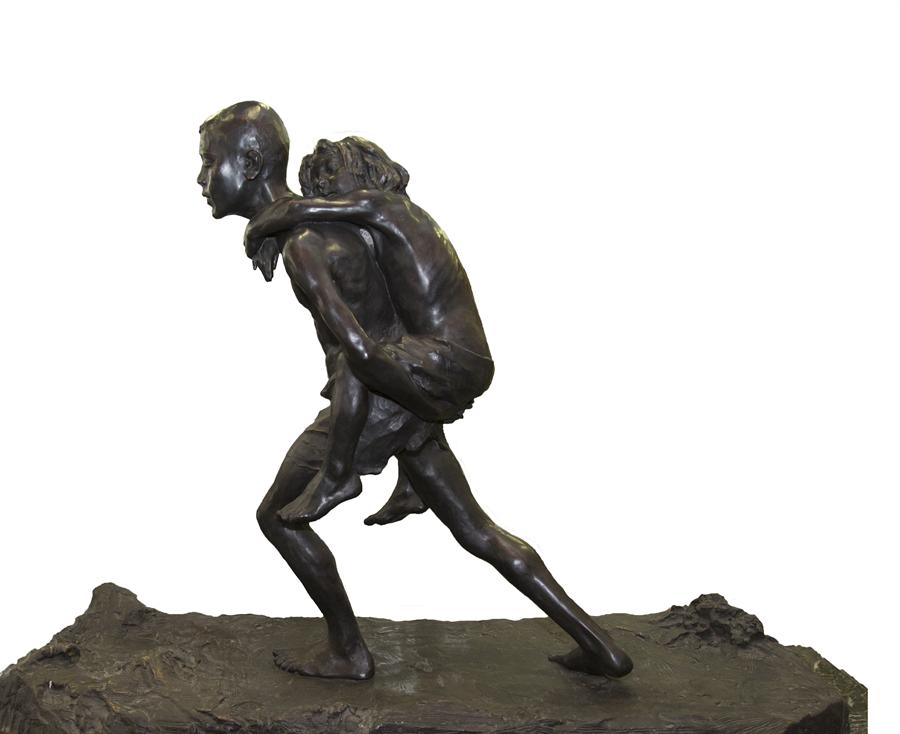L’inizio alla vita, 1902 ca.
Michelangelo Monti (Milan 1875 – Turin 1946)
L’inizio alla vita
1902 ca
bronze
cm 130 x 60 x 180
At the Turin Quadriennale in 1902, Monti presented his work, L’inizio alla vita [“The Beginning of Life”], a group in plaster with a social message, displayed in the same room in which Pellizza da Volpedo exhibited his Quarto Stato [“Fourth State”].
For this work, he used as his models his younger siblings, Leonardo and Antonietta, to great critical acclaim. Two versions of this piece were created contemporaneously, one for Toro Assicurazioni and one for the Monti family. The two fusions were carried out by the Fonderia De Carli in Volvera. The original plaster and the copy belonging to the Monti family are preserved at the Museo della Scultura di Montevarchi (Arezzo).
Michelangelo Monti begins his studies at the Accademia di Brera, before he moves to Turin, where, in 1896, he attends the Accademia Albertina. The creator of busts, funerary monuments, and an extraordinary modeler of female nudes, he initially works under the influence of Lombard Pictorialism, and later goes in search of less decorative and more sculptural forms.
He is greatly renowned in Turin as a portrait painter for the middle-upper classes of the bourgeoisie, intellectuals and entrepreneurs alike, but above all, a highly elegant depicter of small, full-body parlour portraits, a style very rarely practiced in the Savoy city by his contemporaries. He participates in various national collectives and was also the designer behind various monuments dedicated to the Great War.
His most famous work is Toro Rampante [“Raging Bull”], which is adopted as the symbol of Toro Assicurazioni in 1930. In 1999, his granddaughter, Maria Celeste Monti, bequeaths 156 of the artist’s works that form part of his plaster cast gallery to the municipality of Montevarchi. These are turned over to the permanent collection of the Cassero museum of 19th- and 20th-century Italian sculptures.
